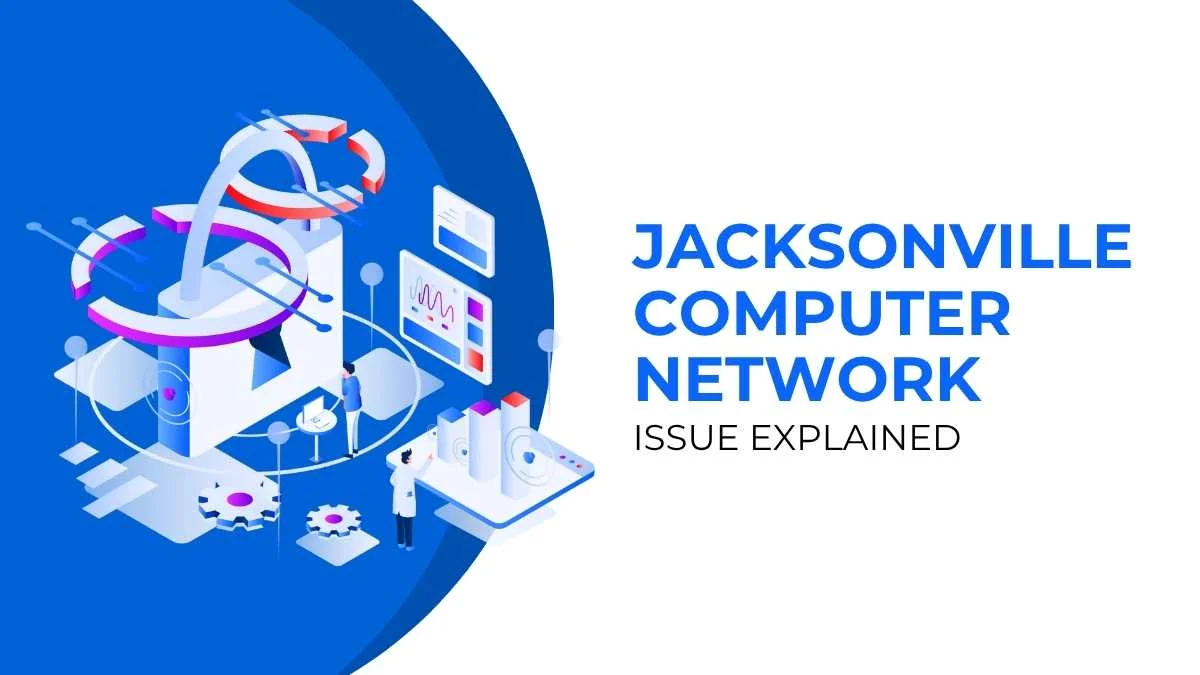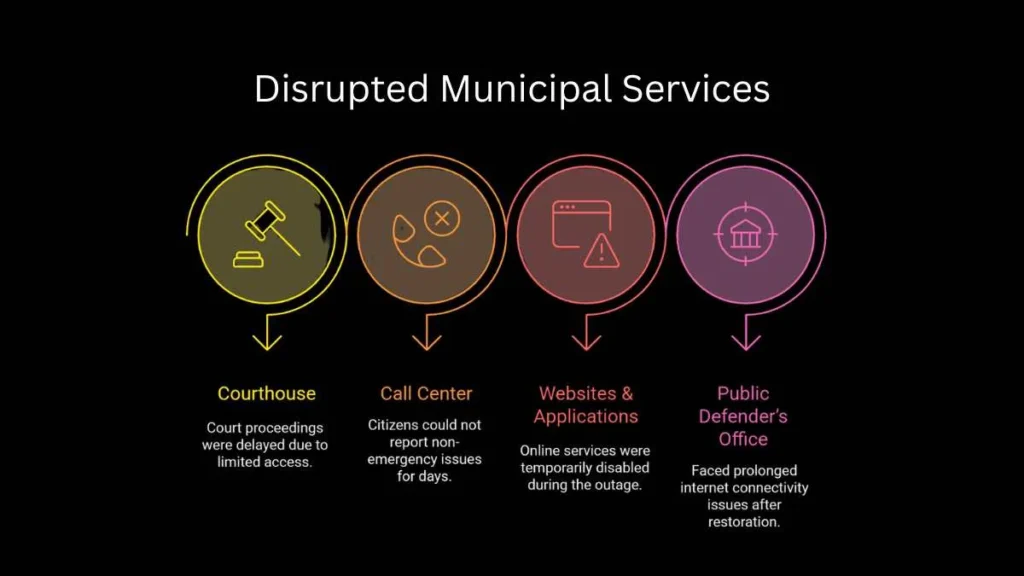TECH
Jacksonville Computer Network Issue Explained

The Jacksonville Computer Network Issue marked a major disruption in the city’s IT infrastructure, affecting essential municipal operations and digital services across Jacksonville, Florida. Beginning in early September 2024, the failure impacted public access to services at the Duval County Courthouse, the 630-CITY call center, and several city-operated websites. Both residents and city employees experienced widespread system delays and service unavailability for several days.
Table of Contents
What Caused the Jacksonville Computer Network Issue?
Initially believed to be a configuration glitch, the problem was later confirmed to be a critical hardware failure. Investigations revealed that aging core components malfunctioned during routine maintenance, triggering a cascading effect throughout the city’s network. These components were central to managing both internal and external network traffic.
The city clarified that no cyberattack or malicious intrusion occurred. Nevertheless, the incident exposed key vulnerabilities, such as outdated infrastructure, limited redundancy, and insufficient system resilience.
Which Services Were Disrupted?
The outage severely impacted the city’s municipal services:
- Duval County Courthouse: Court proceedings were delayed due to limited access to case records and internal systems.
- 630-CITY Call Center: Citizens could not report non-emergency issues or access city information for several days.
- Public Websites & Applications: Online services like utility bill payments, permit tracking, and public notifications were temporarily disabled.
- Public Defender’s Office: Faced prolonged internet connectivity issues, even after core systems were restored.

While some systems resumed within days, others took longer due to dependencies on external networks or third-party vendors.
Timeline of Events
| Date | Event |
| Early September 2024 | Routine maintenance on core IT systems |
| Mid-September | System failures escalate; configuration issues suspected |
| September 20, 2024 | Emergency Operations Center (EOC) activated |
| September 22, 2024 | Hardware failure identified as root cause |
| September 23–26, 2024 | Federal assistance (FBI & DHS) begins |
| September 27, 2024 | Core network functions restored |
| Early October 2024 | Some external departments (e.g., Public Defender) still affected |
Recovery and Preventive Measures
Following the outage, Jacksonville launched a city-wide digital resilience initiative. Key focus areas include:
Infrastructure Modernization
- Replacing legacy hardware with scalable, cloud-based infrastructure
- Installing load balancers and automated failover systems
Enhanced Cybersecurity & Monitoring
- Deploying real-time AI-based threat detection systems
- Conducting mandatory penetration testing and vulnerability audits
Policy Reforms and Employee Training
- Developing detailed incident response playbooks for each department
- Conducting regular disaster recovery simulations and training workshops
Government Response and Transparency
The city activated its Emergency Operations Center within 24 hours of the incident’s escalation. Jacksonville’s Technology Solutions Department, in collaboration with federal agencies like the FBI and Department of Homeland Security, worked around the clock to deploy backup systems and resume essential operations.
Cloud-based tools and VPN rerouting were quickly implemented to restore functionality. The city’s frequent press briefings and updates via social media helped dispel misinformation and maintain public confidence during the crisis.
Key Lessons from Jacksonville’s Network Crisis
Jacksonville’s IT failure emphasized the need for cities to future-proof their digital ecosystems. Major takeaways include:
- System Redundancy: Establishing multiple failover paths and continuous health monitoring
- Hardware Lifecycle Reviews: Phasing out outdated systems before end-of-life
- Proactive Training: Conducting regular mock drills to improve incident preparedness
- Cloud Migration: Moving core services to hybrid or cloud-native environments
- Smart Logging & Audit Trails: Enabling faster diagnosis and response during outages
Long-Term Digital Transformation Goals
Jacksonville is now transitioning toward a zero-trust architecture a security-first model that requires verification of all devices and users before granting access. This framework reduces risks from both internal misconfigurations and external attacks.
In addition, the city aims to consolidate its fragmented IT systems into a centralized digital platform, enhancing speed, transparency, and service delivery. Jacksonville is also partnering with national infrastructure programs to fast-track funding for critical IT upgrades.

Conclusion: A Blueprint for Municipal IT Resilience
The Jacksonville network outage, though severe, did not spiral into catastrophe largely due to timely intervention, inter-agency cooperation, and transparent communication.
This incident has prompted a complete rethinking of Jacksonville’s digital infrastructure strategy. By prioritizing modernization, cybersecurity, and preparedness, the city is not only rebuilding its systems but setting a new national benchmark for municipal.
-

 FRIENDSHIP MESSAGES2 months ago
FRIENDSHIP MESSAGES2 months ago100+ Heart Touching Sorry Messages for Friends
-

 ANNIVERSARY WISHES6 months ago
ANNIVERSARY WISHES6 months ago100+ Beautiful Engagement Anniversary Wishes Messages and Quotes
-

 BIRTHDAY WISHES5 months ago
BIRTHDAY WISHES5 months ago300+ Happy Birthday Wishes for Brother | Heart Touching Happy Birthday Brother
-

 BIRTHDAY WISHES6 months ago
BIRTHDAY WISHES6 months ago200+ Unique Birthday Wishes for Your Best Friend to Impress on Their Big Day
































